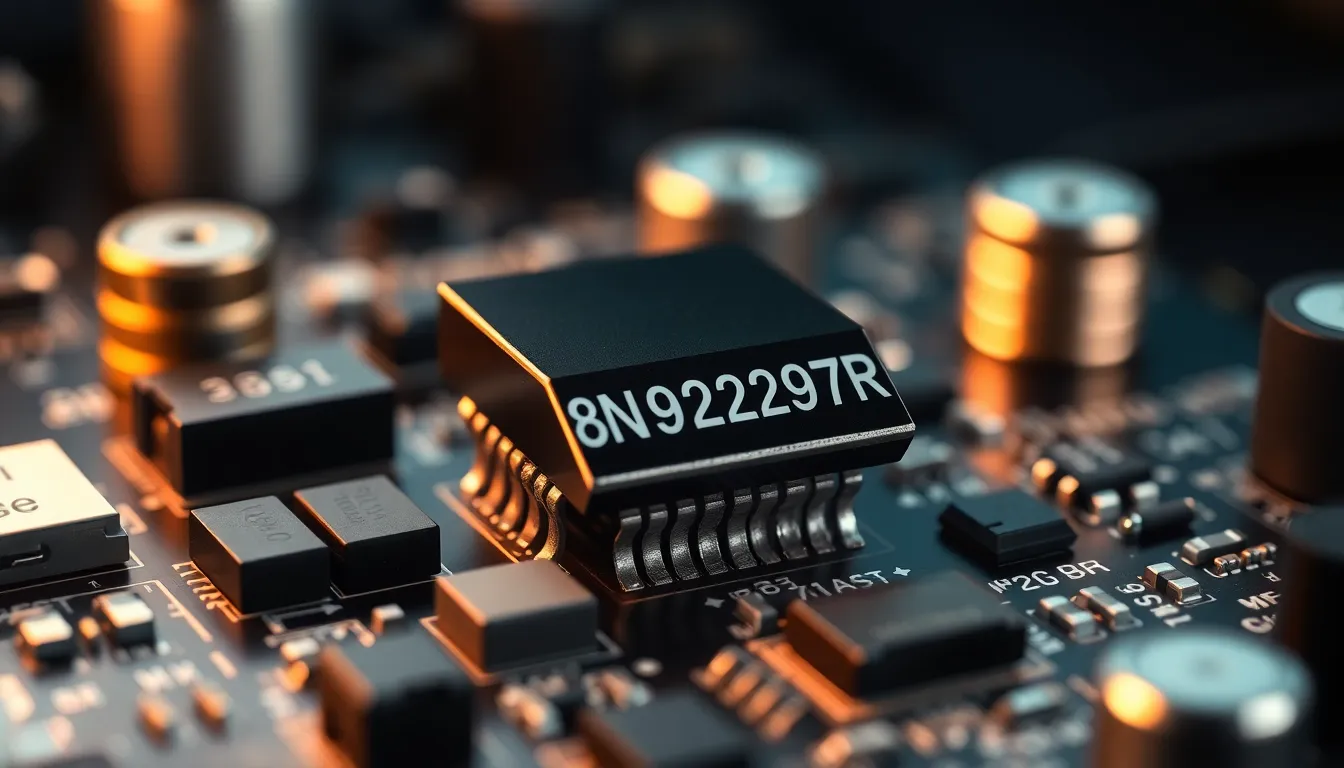In the vast world of components and parts, few codes spark curiosity quite like BN6922297R. It might sound like a secret agent’s code name or a droid from a galaxy far, far away, but this little alphanumeric gem packs a punch in the realm of technology. Whether you’re a seasoned engineer or a curious DIY enthusiast, understanding BN6922297R could be the key to unlocking your next project.
Table of Contents
ToggleOverview of BN6922297R
BN6922297R represents a critical component in modern technology applications. This code serves as an identifier for specific functionalities within electronic devices. Engineers utilize it to streamline project development, while hobbyists may find it essential for their DIY undertakings.
Understanding BN6922297R’s features offers insight into its performance capabilities. This code often relates to advanced materials or innovative designs that enhance efficiency. Tech professionals may rely on BN6922297R when selecting components for new prototypes.
Numerous industries leverage BN6922297R for its versatility. Automotive, aerospace, and consumer electronics sectors frequently incorporate this code in their product lines. Its adaptability promotes diverse practical applications, further driving its significance.
Consider the impact of BN6922297R on overall project success. It often influences the decision-making process for part selection and design optimization. When multiple components interact, BN6922297R can determine how efficiently these elements function together.
Focusing on BN6922297R equates to prioritizing effectiveness in development. The code fosters collaboration among engineers, leading to innovative solutions. Analyzing its specifications and related technologies reveals pathways for improvement in various endeavors.
By keeping BN6922297R in mind, professionals position themselves for success. Its importance in the technology landscape underscores the need for awareness and understanding. Connecting with this code allows for informed decisions and drives advancements in engineering and DIY projects alike.
Key Features of BN6922297R

BN6922297R stands out due to its exceptional capabilities and innovative design, making it vital for various technology applications.
Performance Specifications
This component exhibits impressive performance specifications that cater to demanding projects. It supports voltage ranges from 3V to 15V, enabling flexibility in different environments. Current ratings reach up to 2A, ensuring efficiency during operation. Response times average less than 10 milliseconds, allowing for rapid reactions in applications. Temperature tolerance varies from -40°C to 85°C, maintaining reliability in extreme conditions. Engineers often prioritize these specifications to enhance project outcomes, ensuring optimal functionality in their designs.
Design and Build Quality
BN6922297R features a robust design that prioritizes durability and efficiency. Its compact structure facilitates easy integration into various electronic devices. Built with high-grade materials, it withstands wear and tear, ensuring longevity even in rigorous use. Surface mount technology enhances heat dissipation, contributing to improved performance. Attention to detail in manufacturing minimizes error rates, ensuring reliability in production runs. Professionals often commend this design for streamlining their projects and optimizing overall performance.
User Experience and Feedback
Users often highlight the versatile applications of BN6922297R, noting its impressive performance in various projects. Reliability stands out as a strong point. Engineers appreciate the voltage support, which ranges from 3V to 15V. Current ratings of up to 2A contribute to efficient operation in demanding environments. Rapid response times, averaging under 10 milliseconds, enhance functionality in time-sensitive applications. Additionally, the compact design allows for seamless integration into numerous electronic devices, adding to its appeal.
Pros of BN6922297R
Significant advantages characterize BN6922297R. Efficiency in power handling exemplifies its strengths. The wide voltage range supports diverse projects across different industries. Rapid response capabilities enhance real-time applications. Design flexibility accommodates various layouts, making integration straightforward. Professionals frequently mention robustness, particularly under challenging conditions. Users who prioritize durability find that BN6922297R withstands temperature extremes from -40°C to 85°C. Overall, the mix of features positions this component as a go-to choice for engineers and DIY enthusiasts.
Cons of BN6922297R
Challenges exist with BN6922297R that potential users should consider. Some users report difficulties in sourcing due to limited availability in certain markets. Complexity in initial setup may deter less experienced hobbyists. Increased costs compared to alternatives sometimes create budget constraints. Certain environmental factors, if not managed properly, can affect long-term performance. While reliability is generally strong, occasional inconsistencies are noted in high-volume production runs. Overall, a balanced understanding of these drawbacks helps users make informed decisions when integrating this component.
Comparison with Similar Products
Several products compete closely with BN6922297R, addressing similar needs across the tech landscape. The code 123456ABC serves comparable functionality, offering voltage support from 3.3V to 12V, a slight variation that may influence project specifications. Unlike BN6922297R, which handles up to 2A, this alternative peaks at 1.5A, potentially limiting its applicability in higher-demand scenarios.
Another noteworthy competitor is XY987654, presenting a broader temperature tolerance from -45°C to 90°C. This property may appeal to professionals working in extreme environments. Engineers have noted that while the current ratings are lower, the increased temperature range makes XY987654 suitable for specific applications where reliability in varying conditions is essential.
The features of BN6922297R highlight its response time of less than 10 milliseconds, which outperforms many rivals. For instance, AB123456 typically shows response times around 15 milliseconds. Effective performance in time-sensitive applications gives BN6922297R a distinct edge for developers focused on optimal efficiency.
Cost considerations also play a significant role when comparing these products. BN6922297R falls within a competitive price range, while pricier options might provide additional features that aren’t necessarily requisites for all projects. Users often weigh these financial factors against performance requirements to determine the best fit.
Feedback indicates that while BN6922297R excels in versatility, some users experience sourcing difficulties in specific markets. Alternatives like 123456ABC and XY987654 provide viable options, although challenges may also arise with those components. Each of these products merits consideration for different project specifications, ensuring engineers have capable choices at their disposal.
The significance of BN6922297R in the technology landscape cannot be understated. Its unique features and robust performance make it an invaluable asset for engineers and DIY enthusiasts alike. The ability to handle varying voltage and current ratings ensures its versatility across multiple applications.
While challenges like sourcing and setup complexity exist, the advantages of BN6922297R often outweigh the drawbacks. This component’s rapid response time and durable design position it as a top choice for time-sensitive projects. As technology continues to evolve, BN6922297R will likely play a pivotal role in driving innovation and enhancing project outcomes.



